Best Chef in the World?
“I desire you would use all your skill to paint your picture truly like me, and not flatter me at all, but remark all these roughness, pimples, warts, and everything as you see me; otherwise I will never pay a farthing for it.”
– Oliver Cromwell
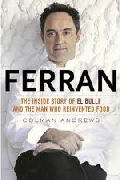 I’ve reached the point in living overseas where I don’t pay that much attention to US food press, particularly in regard to things like the newest book flavor of the moment. But a review in the NY Times of Colman Andrews’ new biography of Ferran Adriá that basically trashed the book for being nothing more than a fluff piece caught my eye. Now, I don’t know Colman well – we’ve met, as best I recall, thrice, two of those while I was working in a restaurant where he was a guest at a table, and once in passing at a food event where we were introduced and had a whopping thirty second conversation before we both moved on. I’ve got his book on the cooking of the Riviera – well written, thoughtful, insightful, and a favorite to refer to for the cuisine of that area, and, I’ve been a fan and subscriber of Saveur magazine for many years. And we follow each other on Twitter. So while I can’t say that I know the man, I’m usually a decent judge of character and he hasn’t struck me in person or in print as someone likely to write a puffed up biography.
I’ve reached the point in living overseas where I don’t pay that much attention to US food press, particularly in regard to things like the newest book flavor of the moment. But a review in the NY Times of Colman Andrews’ new biography of Ferran Adriá that basically trashed the book for being nothing more than a fluff piece caught my eye. Now, I don’t know Colman well – we’ve met, as best I recall, thrice, two of those while I was working in a restaurant where he was a guest at a table, and once in passing at a food event where we were introduced and had a whopping thirty second conversation before we both moved on. I’ve got his book on the cooking of the Riviera – well written, thoughtful, insightful, and a favorite to refer to for the cuisine of that area, and, I’ve been a fan and subscriber of Saveur magazine for many years. And we follow each other on Twitter. So while I can’t say that I know the man, I’m usually a decent judge of character and he hasn’t struck me in person or in print as someone likely to write a puffed up biography.
That was intriguing enough to get me to pick up an e-book copy and sit down to read it. All I can say about the Times review is that we must have been reading completely different versions of the book, if the same book at all. No more to say about the review – on to the book.
Regular readers know that I’m not much of a fan of the world of foams, gels, airs, etc., and typically don’t enjoy those sort of meals very much, even if I find them intellectually interesting. That may, however, be simply that I’ve only had meals prepared by chefs who aren’t very good at it. Oh, they’re good enough at the scientific techniques – they aerate and spherify with the best of them – they produce gems of presentation – and, for the most part, they don’t deliver on the flavors, the seasoning, the base ingredients. It’s been a series of meals that are all about the vanguard methods with little understanding of the basics of cooking.
By the end of reading the book, lengthily titled Ferran: The Inside Story of elBulli and the Man Who Reinvented Food (really? a two line subtitle?), I found myself actually interested in what it is that Adriá is and has been doing – as an intellectual exercise – it appeals to my inner nerd. I found myself thinking, gee, if I’d have kept on heading in the direction of laboratory and research work as I set out to do in my younger years, and combined it with my love of cooking, I could have easily ended up down that path. I also find myself at the end of the book with even less interest than I had before in actually going to elBulli, not that that’s likely to be in the cards at any time in my future.
The book is, as I’ve always found Colman’s writing to be, inquisitive, well written, and very prominently displaying both the polish and the blemishes of the man it exposes. I come away thinking, “of all the pompous, self-important, hypocritically humble people…” and “well maybe he has a right to be…” in regard to the “best chef in the world”. Of course, when you’ve been lauded with the accolades that he has, it’s bound to rub off. How could it not? But at least in this biography, he doesn’t come across as a likable guy, or in fact someone that I’d want to be in the room with on a social basis for more than about five minutes. In fact, in some ways it reminded me of having just seen The Social Network and the portrayal of Mark Zuckerberg as a pathetic, self-absorbed savant.
I doubt that was the intention, and there’s certainly plenty of good said about the man in the book, and about his food, and about the restaurant, and much about how beautiful the setting is (which at times comes across almost more important than all the rest of it). I particularly enjoyed the history and development leading from the early days, pre-Adriá up to, essentially, today (or at least about 8 months ago when the book more or less terminates).
If there’s a fault in the book, it is in the lack of any clear picture of those around Adriá. While true, the title of the book is his name, it purports to be the story of the restaurant as well, and while the early history and original owners are well developed, there’s a lack of any real exploration of those surrounding him – his senior staff, both front and back of house, his wife, and other than one or two chefs who have had an impact on him or vice versa, both good and bad, any outside influences. I have trouble imagining that those people have not been of significance in the development of the restaurant, as well as his personal development. But that may be a series of stories for another day and another book.
The conclusion, at several points, both by author and others, that Adriá will always be remembered and that there will always be a pre- and post- annotation in the annals of culinary history seems unlikely to me. There is no doubting the import the man has had on the culinary world, but it is easy to spend a short amount of time in conversation with those in the food world who have not been steeped in the classics to find a complete lack of knowledge of luminaries like Escoffier, Vatel, Guerard, Bocuse, or whomever you wish to name, and that’s just some of the big names in the French world. The likelihood is that a hundred years from now, perhaps even just fifty or less, Adriá will be nothing more than a footnote lost amongst volumes of information that have succeeded him, and only someone delving into the cuisine of our era will encounter him as anything more than that, and then, probably just because he has been an obsessive documenter of his own work. Just a prediction that I doubt I’ll be around to checkout.
In the end, this is a fascinating read, well worth the investment, financial and temporal, whether you’re “into” this sort of cuisine or not, and I highly recommend it.
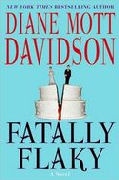 I was mucking about in one of our local English language bookstores, just looking for something casual to read (why, I don’t know – I have more books piled up and also loaded on my e-reader than I’ll likely ever get to) when I stumbled across a few books from Diane Mott Davidson. She has written what turned out to be a fifteen volume series (with more on the way I gather) of cozy mysteries – you might remember… no, you won’t… that a little over five years ago I reviewed a trio of such fare… if you’re interested,
I was mucking about in one of our local English language bookstores, just looking for something casual to read (why, I don’t know – I have more books piled up and also loaded on my e-reader than I’ll likely ever get to) when I stumbled across a few books from Diane Mott Davidson. She has written what turned out to be a fifteen volume series (with more on the way I gather) of cozy mysteries – you might remember… no, you won’t… that a little over five years ago I reviewed a trio of such fare… if you’re interested, 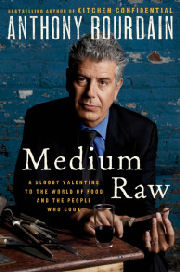 I disliked Kitchen Confidential. Let’s just get that out of the way with. Let the hate mail begin. Anthony Bourdain’s hate fueled rage against the restaurant industry machine that ground him up and spit him out (with his admitted acquiescence… no, active participation) was, for me, nothing more than misdirected venom spewing about his days of drugs and debauchery. I know many of the personalities that found themselves lambasted in the book and found his characterizations to be mean-spirited and caricatured, emphases on occasional quirks or happenstances that he blew up into full blown personae. I even worked with a couple of them and found their kitchens to be anything but like the bastardized versions that found their way to his pages. I found myself doubting that he knew many of them more than perfunctorily. But the book has become an epic work on the world of restaurant work, revered among the young who are just entering the profession. Perhaps it’s because he and I are basically the same age and had vastly different experiences and very different perceptions looking back that I found it too one-note, to specific to just him, despite being touted as a universal.
I disliked Kitchen Confidential. Let’s just get that out of the way with. Let the hate mail begin. Anthony Bourdain’s hate fueled rage against the restaurant industry machine that ground him up and spit him out (with his admitted acquiescence… no, active participation) was, for me, nothing more than misdirected venom spewing about his days of drugs and debauchery. I know many of the personalities that found themselves lambasted in the book and found his characterizations to be mean-spirited and caricatured, emphases on occasional quirks or happenstances that he blew up into full blown personae. I even worked with a couple of them and found their kitchens to be anything but like the bastardized versions that found their way to his pages. I found myself doubting that he knew many of them more than perfunctorily. But the book has become an epic work on the world of restaurant work, revered among the young who are just entering the profession. Perhaps it’s because he and I are basically the same age and had vastly different experiences and very different perceptions looking back that I found it too one-note, to specific to just him, despite being touted as a universal.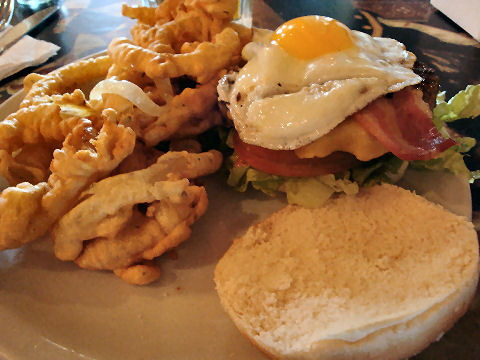
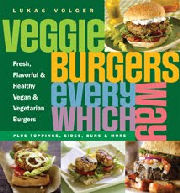 Not long ago I came across this little gem, Veggie Burgers every which way, by Lukas Volger, who writes the
Not long ago I came across this little gem, Veggie Burgers every which way, by Lukas Volger, who writes the 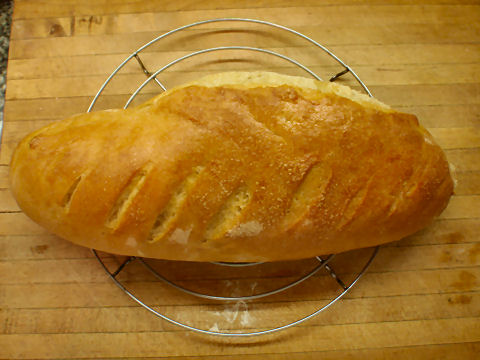
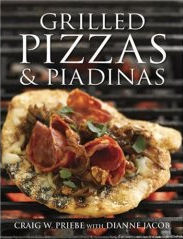 Buenos Aires – The quote above comes from one of my relatively new favorite little cookbooks. It’s a great, step-by-step guide to making various types of grilled pizzas and, those wonderful fold over pizza sandwiches, the piadinas. It’s well-written, to the point, doesn’t make any outlandish claims to having invented the genre as, well, one in particular has, and best of all, is really nicely illustrated with superb photographs that give you a solid sense of what you can expect. It also covers the gamut from basics to elaborate, from savory to sweet, and from pizza for one to party planning. And maybe the really best thing of all, they make it easy. What more can you ask from a cookbook?
Buenos Aires – The quote above comes from one of my relatively new favorite little cookbooks. It’s a great, step-by-step guide to making various types of grilled pizzas and, those wonderful fold over pizza sandwiches, the piadinas. It’s well-written, to the point, doesn’t make any outlandish claims to having invented the genre as, well, one in particular has, and best of all, is really nicely illustrated with superb photographs that give you a solid sense of what you can expect. It also covers the gamut from basics to elaborate, from savory to sweet, and from pizza for one to party planning. And maybe the really best thing of all, they make it easy. What more can you ask from a cookbook?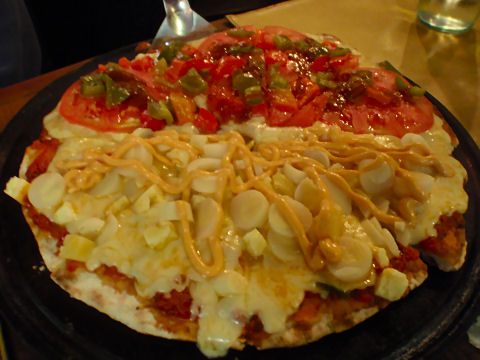
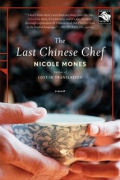 First up was the reading for total pleasure. I’d run across references to the book The Last Chinese Chef by Nicole Mones, in various spots on the internet – I think I even used a quote from the book as part of one of my posts not that long ago. It sounded completely intriguing, and then a couple of food biz friends recommended it highly. I do the same. By turns a romance, a food book (and I’m already tracking down recipes to try out, some of which the author provides on her website), a personal narrative from several perspectives, and even a touch of suspense, the book is well crafted, an enjoyable read – not a completely light, easy reading book, but not overly intellectual either. Initially I thought it was a little… fluffy… when it started out – the narrative part, at times, does have a sort of harlequin romance character to it – but it quickly becomes clear this is intentional and meant to reflect the proponent’s personality more than anything else – sections that are narrated from the point of view of other characters take on an entirely different style, tone and quality of writing – it’s clear that Ms. Mones can write well, and chooses simply to use a lighter style of writing for the first character introduced. I never read her other book for which she is famous – Lost in Translation – I hated the movie, but then, never judge a book by its movie… you know? Highly recommended reading material for anyone who likes food and cooking.
First up was the reading for total pleasure. I’d run across references to the book The Last Chinese Chef by Nicole Mones, in various spots on the internet – I think I even used a quote from the book as part of one of my posts not that long ago. It sounded completely intriguing, and then a couple of food biz friends recommended it highly. I do the same. By turns a romance, a food book (and I’m already tracking down recipes to try out, some of which the author provides on her website), a personal narrative from several perspectives, and even a touch of suspense, the book is well crafted, an enjoyable read – not a completely light, easy reading book, but not overly intellectual either. Initially I thought it was a little… fluffy… when it started out – the narrative part, at times, does have a sort of harlequin romance character to it – but it quickly becomes clear this is intentional and meant to reflect the proponent’s personality more than anything else – sections that are narrated from the point of view of other characters take on an entirely different style, tone and quality of writing – it’s clear that Ms. Mones can write well, and chooses simply to use a lighter style of writing for the first character introduced. I never read her other book for which she is famous – Lost in Translation – I hated the movie, but then, never judge a book by its movie… you know? Highly recommended reading material for anyone who likes food and cooking.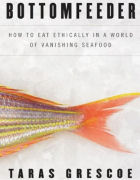 My other book was a bit more on the serious side. Bottomfeeder: How to eat ethically in a world of vanishing seafood by Taras Grescoe, has been sitting on my reading stack for months now. Like other books of the genre – the more prominent recent ones being what seems a slew by Michael Pollan, it’s a grim picture of what we’ve done to our food supply, what’s going to happen if we continue the way we are, and suggestions for what we can do about it. Unlike Pollan, Grescoe tackles the theme with a bit of a sense of humor, and a bit of self-deprecation – in his quest for information, detail, and some of the whys and wherefores, he finds himself, by conscious choice, eating his way through a selection of seafood that he already knows, based on his thesis, he oughtn’t to be. He excuses himself with “this will be the last time I ever…” sort of reasoning, which doesn’t really excuse it, but is the same reasoning that most of us use when confronted with ideas of the sort that we have some responsibility for the planet and our bodies in our choices of what we eat. The old “it’s already been caught, so if I don’t eat it, someone else will or it will go to waste” is a specious argument – lowering demand, in the long run, can only help towards a change in the approach of restaurants’, fishmongers’ and fisheries’ attitudes. One bite at a time. The book does not end on any sort of upbeat or hopeful note – Grescoe seems to have concluded that it’s unlikely change will come in time – one hopes he doesn’t actually believe that, as, if so, the only reason for having written the book would have been self-promotion and greed – and I don’t think that’s the case, I think he just doesn’t sum things up in a way that is as likely to lead towards change as he could have – he’s presented his case, he’s basically stated what he’s going to do about it, and he leaves it up to the individual reader to decide what he or she is going to do. The case statement was powerful, the summation to the jury of his peers could have used more punch. Still, overall it’s well worth a read – not to mention taking some action.
My other book was a bit more on the serious side. Bottomfeeder: How to eat ethically in a world of vanishing seafood by Taras Grescoe, has been sitting on my reading stack for months now. Like other books of the genre – the more prominent recent ones being what seems a slew by Michael Pollan, it’s a grim picture of what we’ve done to our food supply, what’s going to happen if we continue the way we are, and suggestions for what we can do about it. Unlike Pollan, Grescoe tackles the theme with a bit of a sense of humor, and a bit of self-deprecation – in his quest for information, detail, and some of the whys and wherefores, he finds himself, by conscious choice, eating his way through a selection of seafood that he already knows, based on his thesis, he oughtn’t to be. He excuses himself with “this will be the last time I ever…” sort of reasoning, which doesn’t really excuse it, but is the same reasoning that most of us use when confronted with ideas of the sort that we have some responsibility for the planet and our bodies in our choices of what we eat. The old “it’s already been caught, so if I don’t eat it, someone else will or it will go to waste” is a specious argument – lowering demand, in the long run, can only help towards a change in the approach of restaurants’, fishmongers’ and fisheries’ attitudes. One bite at a time. The book does not end on any sort of upbeat or hopeful note – Grescoe seems to have concluded that it’s unlikely change will come in time – one hopes he doesn’t actually believe that, as, if so, the only reason for having written the book would have been self-promotion and greed – and I don’t think that’s the case, I think he just doesn’t sum things up in a way that is as likely to lead towards change as he could have – he’s presented his case, he’s basically stated what he’s going to do about it, and he leaves it up to the individual reader to decide what he or she is going to do. The case statement was powerful, the summation to the jury of his peers could have used more punch. Still, overall it’s well worth a read – not to mention taking some action.